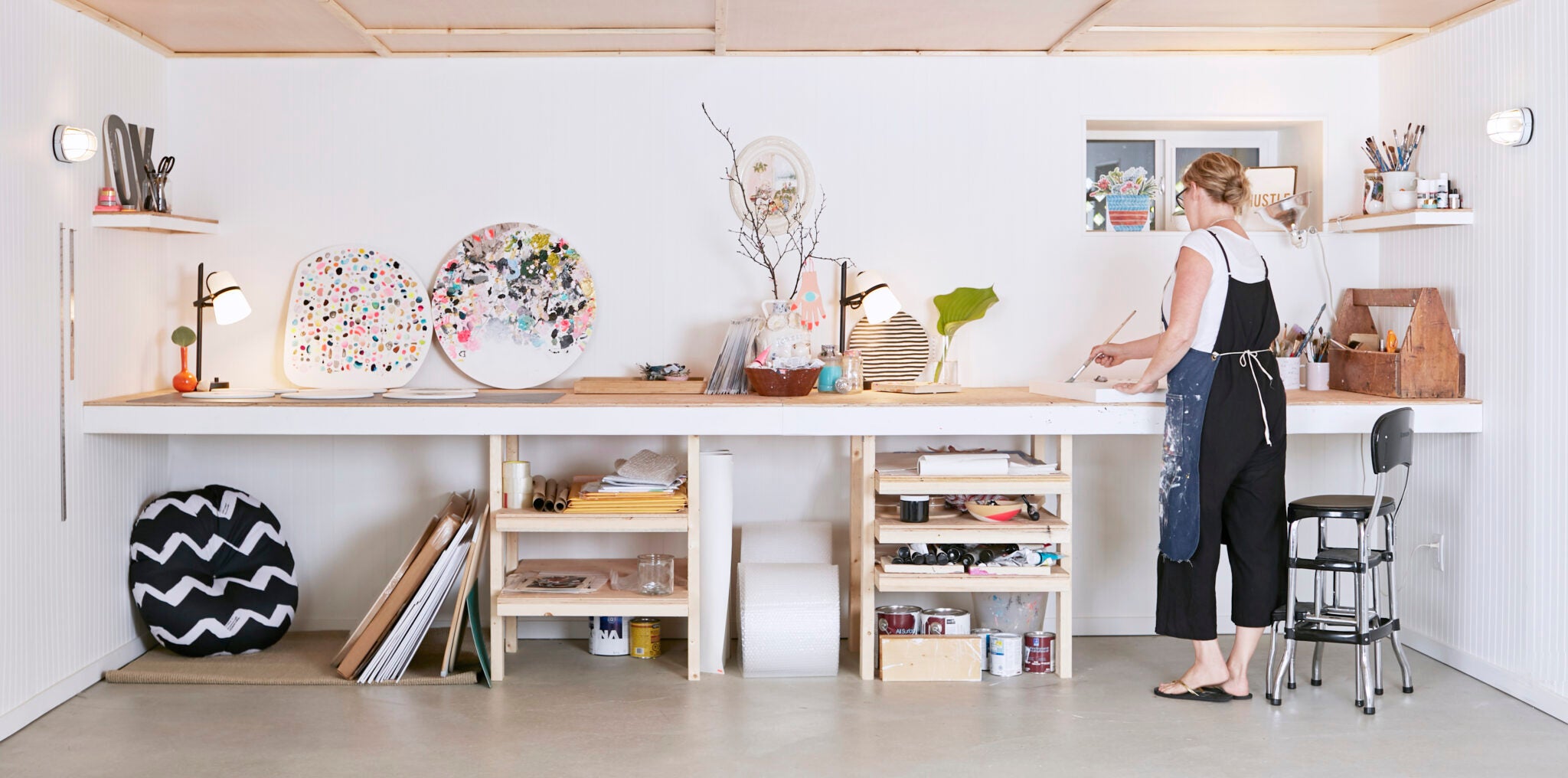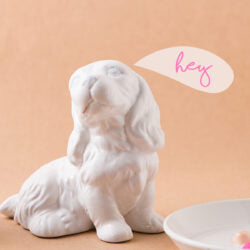Re-imagining and Experimentation with Danielle Krysa
January 4, 2021Now, more than ever, artists are craving a clean slate and there’s no better time than the start of the year to reimagine and experiment fresh ways to express what’s within. Like staring out onto an open field, the creative potential of 2021 is full of untapped promise. But this can be daunting, especially when faced with ongoing turbulence and uncertainty. To be responsive and relevant requires us to listen deeply and seize moments for reflection, which in turn allows us to plant the seeds and nurture our artistic growth.

Over the next few months, Opus will be exploring this creative cycle… with some expert guidance! To kick things off, visual artist and motivational writer, Danielle Krysa, aka ‘The Jealous Curator’, will help get us back into creating, through a series of workshops and weekly prompts examining the subject of Re-imagining and Experimentation.

Author of several art books: “Creative Block”, “Collage”; “Your Inner Critic Is A Big Jerk”; “A Big Important Art Book – Now with Women”; “A Big Important Artist A Womanual”; and her first children’s publication, “How To Spot An Artist”, Danielle has also had the great pleasure of speaking at TEDx, PIXAR, Creative Mornings, and was interviewed for several video segments on oprah.com.
It goes without saying that we’re delighted to have her on board. We recently caught up to discuss some of the concepts and tips she’ll be delving into.
“I love January because it’s a perfect time to reimagine either yourself as an artist, or to reimagine your work.”
I’ve always done collage with found images but these days I’m completely changing the way I create and moving into sculpture. There’s not one cut out piece of paper in my studio and that’s scary because it feels very vulnerable. I’m having to confront deep-rooted doubts and reimagine myself as a 3D artist. Like a roller coaster, it’s exhilarating and terrifying, but it’s also so exciting to see myself make something I never thought I would make.

I talk about the inner critic all the time because whether you’re an artist or a scientist, every human has a voice that says ‘you can’t do this’. My whole goal is to get people to recognize that when they hear it, they need to silence it and move forward.
“Instead of letting it stop you, use your inner critic as fuel to propel you towards your goals, because what you’re able to achieve is really up to you, not that little voice.”
Experimenting is one of the best ways to confront doubt, if you allow yourself to do it! People often expect perfection even if they’re saying they’re just trying things out. Experiments have to go wrong – that’s where the happy accidents come in and that’s when the ‘aha’ moments occur. Your inner critic is telling you it has to be perfect, so if you can say ‘no, you sit down and be quiet, I’m just going to play around and let whatever happens happen’, then you’re going to come up with something really interesting you didn’t even think was possible. I always say that Edison invented the light bulb after 10,000 tries. If he’d quit after 9,999, we’d be sitting in the dark. To reach the ‘aha’ moments, it’s really important to just let yourself play.

In saying that, I think sometimes there is room to question what you’re doing. It’s how you question that’s important. In the first book I wrote, ‘Creative Block’, I interviewed 50 full-time working artists. A lot of them said they had become friends with their inner critic. They described it like that person you don’t really want to call back, but you know you have to. When their inner critic flared up, they wouldn’t let it take over to the point they quit, but they would listen because if the inner critic is nagging, you have to stop and ask, ‘OK, what are you nagging me about?’ When the inner critic says, ‘Oh, this is a mess, and you can’t do this’ maybe it’s really telling you your work is a bit busy. You have to learn to translate its nasty little words into something that’s actually helpful. It’s about finding confidence, and that comes from practice.
“There are a bunch of techniques to give you ownership over that voice, instead of letting it have ownership over you.”
I didn’t make art for almost 20 years because my inner critic said I couldn’t, and that’s the wrong approach. No one’s going to get rid of negativity entirely. You must learn to work with it so you can move forward with your art practice. You have to keep showing up and making, and you have to go to the studio even on days when you really don’t want to. You need to persevere, create and be OK with it turning out terribly. Every few days I still have to quiet my inner critic. I used to feel really bad about that but I don’t anymore.
 Understanding your visual vocabulary is also a good way to empower yourself. A visual vocabulary is basically the devices you tend to employ over and over. It might not even be conscious. It could be the colours you always gravitate towards or the mark-making you use – do you paint dots or do you make little triangular symbols? I used to use the Queen all the time. Why? I don’t know. I just thought it was funny. Maybe it’s because she’s on our money. All of those things which tend to go into your work are your visual vocabulary.
Understanding your visual vocabulary is also a good way to empower yourself. A visual vocabulary is basically the devices you tend to employ over and over. It might not even be conscious. It could be the colours you always gravitate towards or the mark-making you use – do you paint dots or do you make little triangular symbols? I used to use the Queen all the time. Why? I don’t know. I just thought it was funny. Maybe it’s because she’s on our money. All of those things which tend to go into your work are your visual vocabulary.

When I sat down to make a list of my go-to elements, I realised I use pink all the time not because it’s girly and pretty, but because my grandmother was an Avon lady. She had this little rose room in her house where she kept all the leftover makeup. As a kid, I loved it. When she was dying, floating in and out of consciousness, she suddenly addressed my mom in a very clear, lucid way: ‘I just saw my spirit and it’s pink’. It’s like she told us, ‘You have to watch for me in those fuschia shades’. This is twenty-five years ago but so many weird pink things have happened in my life since. At the time I wasn’t making art but when I did start again, I began using pink constantly. At first it wasn’t conscious, but when I really thought about it I was like, ‘Oh my gosh, I think that’s her coming through and being present.’ Now I embrace the colour because to me it means my grandmother’s in my artwork.
Figuring out and analysing your own vocabulary is immensely helpful. You might not know what things mean straight away and that’s fine. You should just keep that list going and the more you discover, the more it legitimises your choices. If you figure out that those triangles actually remind you of the pumpkins you used to carve in Girl Scouts, you can use the marks with intent because you know where they came from.
“These choices make your artwork different from everybody else’s, because your vocabulary is unique to you, stemming from your character and your experiences.”
 When I began the Jealous Curator in 2009 it was completely for myself. I was in a spiral of self-doubt so my husband suggested, ‘Why don’t you start a blog to document the things you love, and then you’ll start to see a pattern and figure out what you want to be making’. He also pointed out (very sweetly), ‘This jealousy is eating you alive but if you say the word out loud, you can turn it into admiration’. So I started writing, in a positive way.
When I began the Jealous Curator in 2009 it was completely for myself. I was in a spiral of self-doubt so my husband suggested, ‘Why don’t you start a blog to document the things you love, and then you’ll start to see a pattern and figure out what you want to be making’. He also pointed out (very sweetly), ‘This jealousy is eating you alive but if you say the word out loud, you can turn it into admiration’. So I started writing, in a positive way.
Very quickly the weight lifted off of my shoulders. By talking to other artists, I began to realise that these people I’d assumed had it easy, had to deal with their own inner critics. They’d get blocked just like me. It made me go, ‘Oh my gosh, there’s all this freedom to do whatever I want. Why did I waste that time?’ So for the last eight years my whole mission has been to not let anybody else waste the time that I wasted, because it’s pointless. Everyone you admire feels exactly the same way. It’s like we’re in this giant club – you can either decide to quit it or you can roll your sleeves up, fail sometimes and cry a little bit, but ultimately pick yourself up and just get on with creating.

Throughout the month of January, Danielle will be sharing her expertise and helping us stay motivated with Jealous Curator Social Media Mondays, a series of inspiring, weekly project prompts. She’ll also be hosting the following compelling and indispensable virtual events, which are definitely not to be missed!
“Digging, Weeding & Planting : Making Your Creative Garden Grow” : Talk + Q&A (1 hour talk/exercises on paper, 30 min Q&A)
Make a plan to plant the right kind of seeds – the kind we need to experience beautiful, bountiful, creative growth!
“Bad (Seeds) Art Party!” : Workshop (15 minute introduction by Danielle, 1.25 hours to make/chat/share)
The only way to make good art, is to make a lot of really bad art first.
